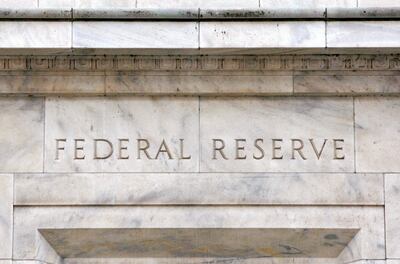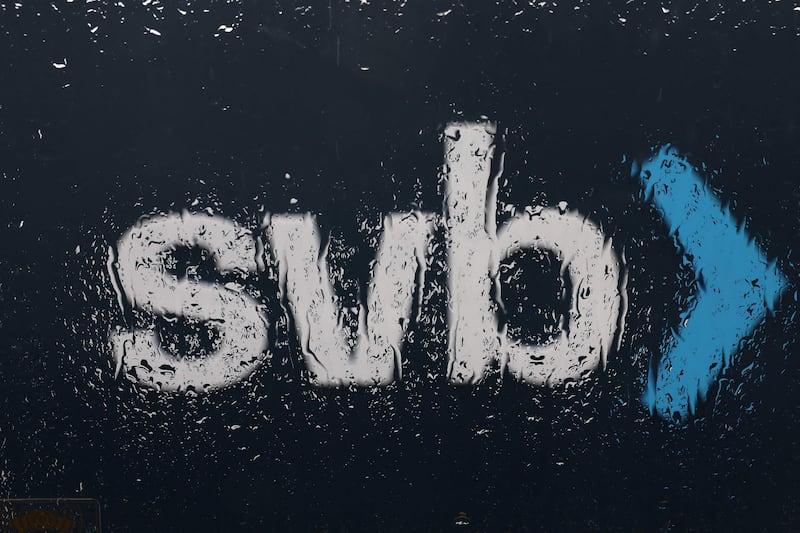Silicon Valley Bank, the 16th-largest US lender that primarily financed start-ups and ventures, collapsed after a bank run last week as depositors sought to withdraw funds amid concerns about its financial health.
The collapse was the second-biggest for a retail bank in US history, after that of Washington Mutual during the 2008 global financial crisis.
It led to quick intervention as the government moved to mitigate the impact on the economy and restore the public’s confidence in the US banking system.
The chaos was triggered by SVB’s sale of its Treasury portfolio at a significant loss and its failed attempts to raise funds to allow for continued withdrawals to steady its shaky balance sheet.
A subsequent deal to sell convertible stocks to raise additional funding was unsuccessful and even a last-ditch effort to sell the company did not materialise and led to a 60 per cent slump in SVB's share price.
All of this led panicked clients to try to withdraw their funds from the lender.
The California-based bank was shut by the California Department of Financial Protection and Innovation, which appointed the Federal Deposit Insurance Corporation (FDIC) as receiver.
The failure of another US lender has sent shock waves through the country's financial system at a time when the world’s largest economy is set to slow down this year amid higher inflation and monetary tightening by the Federal Reserve.
Here is an overview of how SVB collapsed.
The root cause of the collapse
The failure of SVB circles back to the sharp rise in interest rates. The US Federal Reserve has been aggressively increasing its benchmark policy rates from the record-low levels of last year to fight inflation that hit 40-year high in 2022, slowing the economy and curtailing investments.
Investors who pour in money, even in risky investment ventures, when cheaper money is available usually have a low risk appetite in a high interest rate environment.
Their investments into start-ups, the main clientele of SVB, fell significantly as interest rates continued to climb higher.
Run on the bank
As interest rates brought the initial public offerings, another avenue of raising funds for start-ups, to a grinding halt in the US and private funding became increasingly difficult, some of SVB clients started pulling money out of the bank to meet their liquidity needs.
This forced the lender to explore fund-raising options of its own to allow withdrawals to continue.
The run on the bank was worse in the hours leading up to its collapse as a number of start-ups tried to withdraw cash.
Some succeeded but many were unsuccessful, deepening the panic and forcing the FDIC to take control of affairs.
Failed fund-raising attempt
In its bid to fund the redemptions, SVB on Wednesday sold a $22 billion bond portfolio comprising mostly US Treasuries whose prices had dropped amid monetary tightening by the Fed.
It forced the lender to recognise a $1.8 billion loss. SVB tried to fill the gap by raising $2.25 billion from the sale of equity and preferred convertible stock, but did not succeed.
On Friday, the lender scrambled to find alternative funding, including through the sale of the company.
Scope of the failure
SVB had approximately $209 billion in total assets, with about $175.4 billion in total deposits.
It had 17 branches in California and Massachusetts, and served mostly technology-focused companies based in Silicon Valley.
The FDIC said on Friday that all insured depositors would have full access to their deposits no later than Monday morning.
It did not address the uninsured deposits in its initial statement, giving rise to concerns about their fate and the impact on the country's start-up ecosystem and economy.
Deposits of up to $250,000 are insured by FDIC. In SVB's case, about $151 billion of the bank’s total deposits of $175.4 billion are uninsured deposits.
The reverberations of SVB failure can be felt in many sectors beyond the US banking and financial system.
The bank works with more than 1,550 technology companies that are creating solar, hydrogen and battery storage projects.
Some of these start-ups have developed ground-breaking green technology, putting some public and private sector entities on a path to achieving their net-zero ambitions and climate targets.
Trapped in exclusivity
SVB had put in place exclusivity clauses in contracts with some of its clients that restricted them from conducting business with other banks or utilise their services, according to the Securities and Exchange Commission filings.
These exclusivity clauses that varied in scope forced the bank's clients to rely on SVB for most of their banking needs and did not allow them the choice of where they kept the money.
SVB's loan agreement with Limelight Networks, an IT services management company which rebranded as Edigo, shows the kind of exclusivity trap SVB's clients were facing.
"Maintain all of its and all of its subsidiaries’ operating accounts, depository accounts, and excess cash with bank and bank’s affiliates; provided, however, foreign subsidiaries of borrower may maintain accounts outside of the United States with financial institutions other than bank and bank’s affiliates. In addition to the foregoing, borrower, any subsidiary of borrower, and any guarantor shall obtain any business credit card exclusively from bank,” SVB's SEC filing showed.
The bank's lending contract with its clients Oxford Finance, Dexcom and Sweetspot not only dictated borrowers to maintain operating and other deposit accounts with the bank but also restricted that "borrower shall contract exclusively with bank to conduct all of borrower’s foreign exchange transactions including, but not limited to FX contracts and letters of credit", according to the regulatory filing.
A similar clause in SVB lending contract with Hyperion Therapeutics directed the borrower to "maintain substantially all its depository and operating accounts and securities accounts and all foreign exchange transactions with bank and bank’s affiliates.
What is the FDIC and how does it operate?
The FDIC is an independent agency of the US government created to maintain stability and confidence in the nation's financial system.
It insures deposits, examines and supervises financial institutions for safety, soundness and consumer protection.
When a bank fails, the FDIC will arrange the sale of the bank's customer assets to a healthy bank, or, less commonly, it will pay back the bank deposits.
Between 2001 and 2022, 561 banks failed, according to FDIC data. The likelihood of losing money is extremely small as long as an FDIC-insured institution holds it.

US government intervention
The US government stepped in on Sunday with a series of emergency measures to stem the fallout of SVB's collapse on its financial system, assuring depositors that they would be able to recover all of their money.
The announcement by the Treasury Department, the Fed and the FDIC came before the start of trading on Monday, amid fears of contagion.
“Today, we are taking decisive actions to protect the US economy by strengthening public confidence in our banking system,” the three entities said.
“This step will ensure that the US banking system continues to perform its vital roles of protecting deposits and providing access to credit to households and businesses in a manner that promotes strong and sustainable economic growth.”
US Treasury Secretary Janet Yellen approved Sunday's actions that enable the FDIC to complete its resolution of SVB “in a manner that fully protects all depositors” — upon the recommendation of the boards of the FDIC and the Fed, and after consulting President Joe Biden, the entities said.
Depositors will have access to all of their money from Monday, and no losses associated with the winding down of SVB will be borne by the taxpayer.
Shareholders and certain unsecured debt holders will not be protected while the senior management at the lenders has been removed.
The three entities also said similar measures were being followed pertaining to New York's Signature Bank, which was shut down on Sunday by its state chartering authority.
As is the case with SVB, all depositors will be “made whole” and no losses will be borne by the taxpayer.
History of bank collapses
In the last 15 years, several retail banks have collapsed around the world.
In 2008, Washington Mutual, with total assets worth $307 billion, was closed by the US government and its banking assets were sold to JP Morgan Chase for $1.9 billion amid the global financial crisis.
The same year, UK-based HBOS bank collapsed as a result of the global financial crisis. It was subsequently rescued by a government-engineered takeover by Lloyds Banking Group, which subsequently needed a £20 billion taxpayer bailout.
Other banks that also went through a similar situation include Germany’s Sachsen LB, with total assets of $92 billion, the UK’s Bradford and Bingley, with assets of about $63 billion, and IndyMac, a California bank that had grown into one of the largest mortgage lenders in the US.
The US recorded 25 bank failures in 2008, 140 in 2009, 157 in 2010 and 92 in 2011, all triggered by the global financial crisis, according to the FDIC website.
The world’s largest economy also recorded 51 bank failures in 2012, 24 in 2013 and 18 in 2014.
Twenty-nine banks also collapsed in the US between 2015 and 2020, the data shows.
SVB was the first bank to collapse this year, while there were no bank failures in 2021 and 2022.






